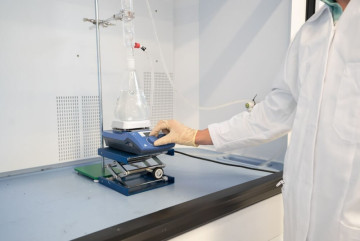Technology comparison
Renewable energies are becoming more and more important. The expansion of photovoltaics is increasing more and more, and many people are installing a photovoltaic system with the installation of a storage system. In this way, the electricity from photovoltaics can not only be used directly, but is also stored and used efficiently. A storage unit serves to optimize self-consumption and, conversely, to buy as little electricity as possible from the public grid. Based on this, we have made a technology comparison.
What storage technologies are there?
Lithium-ion batteries
Energy storage systems can now be based on a wide range of technologies. The most widespread storage technologies are based on lithium-ion. Lithium-ion technology is an umbrella term for many types. The designation depends on the electrode material contained, for example, LiFePO4 (lithium iron phosphate), NMC (nickel manganese cobalt oxides), LTO (lithium titanate oxide). Depending on which electrode material is contained, the batteries have different properties. Within this group, the lithium titanate oxide (LTO) technology is considered separately. Due to the chemical properties of this technology, it is safer than other lithium technologies. It is non-flammable and UL-1973 certified.
Lead batteries
Lead batteries are the classic car battery in the combustion engine. It is probably the longest known battery technology.
Flow batteries
Flow batteries take a different approach to energy storage. In Flow batteries, two electrolytes are stored in separate tanks outside the cell. Pumps and moving parts are needed to generate electricity. The two electrolytes are pumped into the cell and the electrodes flow through a membrane between the electrolytes.
Salt batteries
There are also salt batteries. These include the sodium-nickel battery, a high-temperature battery and the saltwater battery. Saltwater batteries such as the GREENROCK battery and a sodium-nickel battery are fundamentally different. The only commonality is sodium as part of the battery chemistry.
In high temperature batteries, a temperature of several hundred °C must exist within the battery cell for electricity to be stored and released.
This is different with aqueous sodium-ion batteries. The GREENROCK salt water battery belongs to this category. It functions similarly to a lead-acid battery with the important difference that it does not contain any toxic and rare raw materials.
The Latest research approaches
There are already various laboratory theories about “new” technologies. These have not been taken into account here. The focus is on technologies that are ready for the market. But what is really behind these storage technologies? Do they deliver what they promise? BlueSky Energy employees make the comparison and draw a conclusion.
Factors to be compared
Before explaining the basis for the comparison, it is important to get an understanding of various technical terms. The storage technologies are compared on the basis of various characteristics. These are: Temperature tolerance, safety, environmental compatibility, recycling, cycle resistance, practical market experience, energy density, efficiency, depth of discharge/usable capacity and the C-rate. The C-rate describes the relationship between capacity and performance. Here, the capacity is the capacity of the storage unit and the power is what can be taken out at once. The efficiency can be defined by the ratio of expended to usable energy. The depth of discharge describes how much a battery can be discharged. It is given as a percentage in relation to its maximum capacity.
The direct comparison
We have created a ranking based on the technical terms defined above. Individual points were assigned in the various areas from 0- 10. Zero is the worst score and 10 the best. These points were finally added up to form a total sum. To ensure representativeness, the data on the respective technologies was collected from official data sheets. These data sheets come from well-known competitors and system providers in the high-quality sector. Individual battery cells from Asia were also included in the comparison. The allocation of points is as follows:

Results
Summarizing the table, it can be said that LTO (lithium titanate oxide) technology scores best here in terms of the factors listed above. Lead technology gets the title of “taillight”. Unfortunately, it cannot prevail over the others overall, although it scores full marks for recycling and practical market experience. Sodium nickel and Redox Flox occupy the good midfield. Lithium and GREENROCK (technology based on sodium ions) share second place in the ranking. They achieve the same score, but each has individual strengths and weaknesses. To illustrate the table once again, it has been adapted into a meaningful graphic.

There is no such thing as the perfect battery technology
It should be added that it always depends on the area of application in which the battery is used. Individual needs and preferences should always be taken into account. For the sake of understanding, you don’t need a “Formula 1” car in city traffic, even if it performs better than other cars in terms of performance. For the application “city traffic”, other criteria count.
Safety and sustainability that’s what we stand for
We focus on two technologies covering these aspects. These are saltwater batteries and carbocap technology based on LTO cells. Our GreenLight saltwater batteries are leading in terms of environmentally friendliness and safety. They are out of common, non-toxic materials. We are producing in Austria and therefore keeping transport as short as possible within Europe.
Our second product is based on carbocap technology. Vigos – the outdoor power storage based on LTO cells. This battery technology offers 20,000 cycles and therefore, is sustainable due to its long lifetime. Other batteries you would have to change three times during this period. Carbocap technology is safe and non-combustible. It passed the UL-1973 certification tests.
All storage solutions from ESAC are plug & play solutions. Aside from batteries they include battery inverters, cables, fuses and a smart energy management system with lots of extras.
Source: https://www.bluesky-energy.eu/

